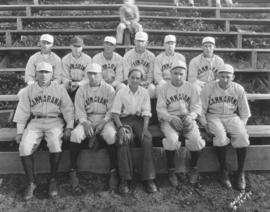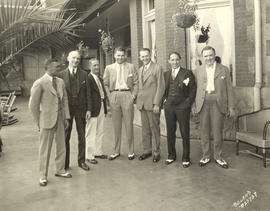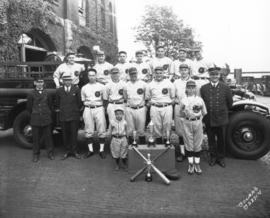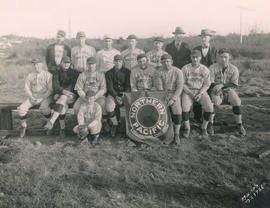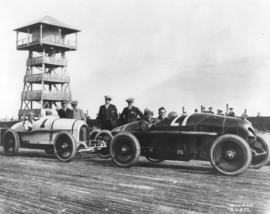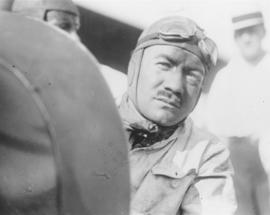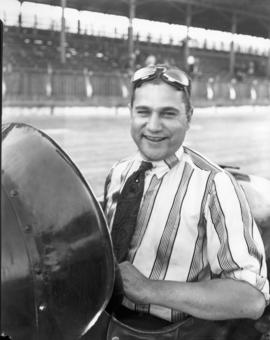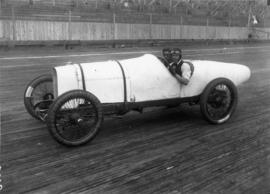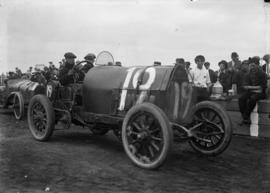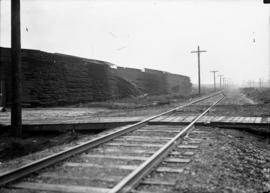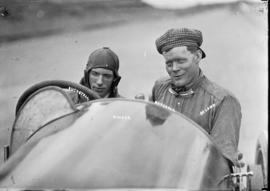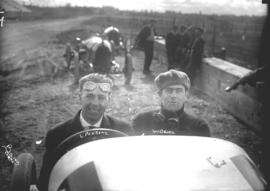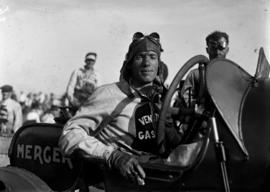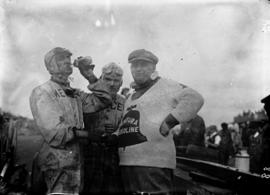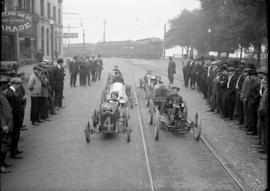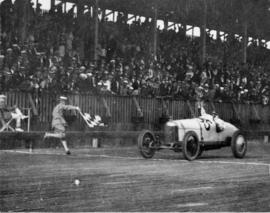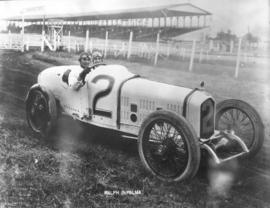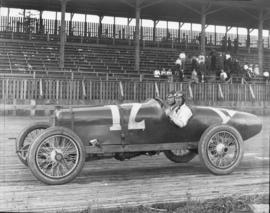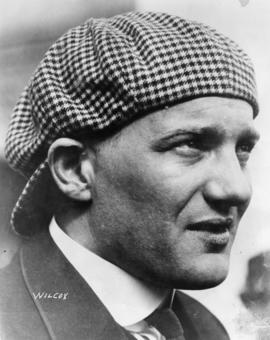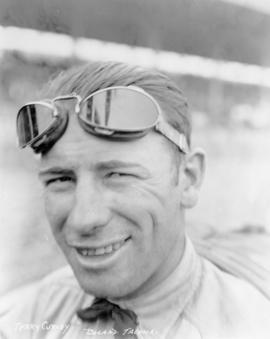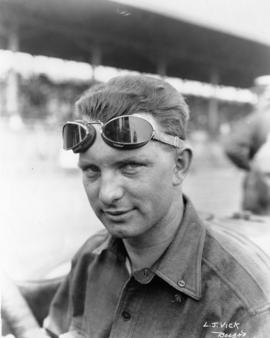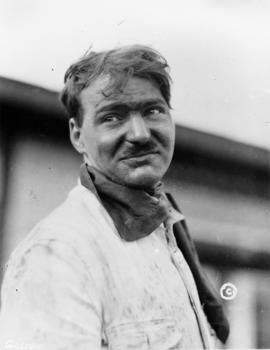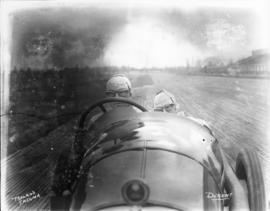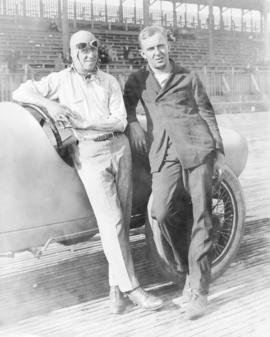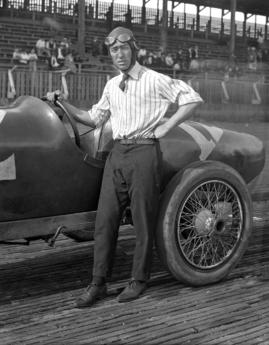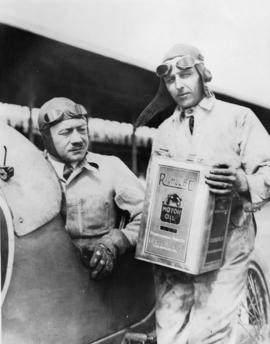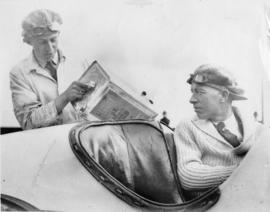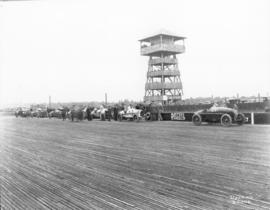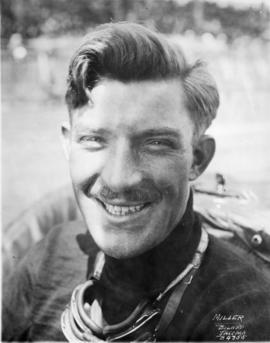- Item
- 1930-05-01
Part of Marvin Boland Photographs
The Cammarano baseball team poses for a group picture on May 1, 1930. The Cammarano Bros., sponsors of the team, were bottlers of beer and carbonated beverages. Photographed at the start of the 1930 baseball season, the Cammaranos joined other company or union sponsored teams. Baseball in Tacoma was heavily followed; the local newspapers often gave more coverage to homebased teams than the national big leaguers. Making his managerial debut was third baseman Al Greco, believed to be the third from left in back row. He would face off against former teammate Sammy Cappa, manager of the Kay Street team, in the May 1, 1930, doubleheader at Lincoln Bowl. The Cammarano Bros. would be shut out by the Kay Streeters, 4-0. (TDL 5-2-30, p. 8) TPL-10070; G53.1-008
Cammarano Bros. (Tacoma); Baseball players--Tacoma--1930-1940; Lincoln Bowl (Tacoma);
